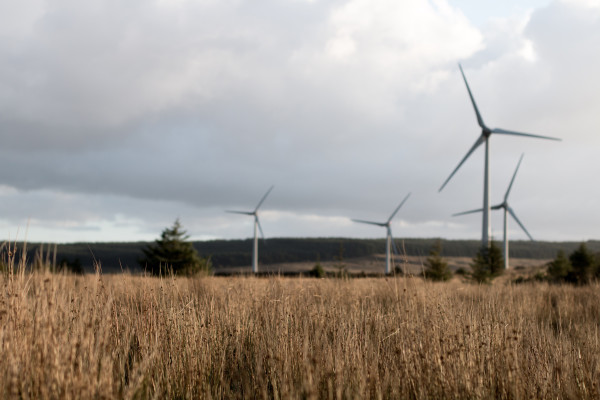

Investors looking for global environmental, social and governance opportunities could look towards China, according to veteran investment adviser Gavin Haynes.
Speaking as China has revealed plans to build a mega solar/wind farm in the Gobi desert to further combat climate change, the investment director and co-founder of Fairview Investing commented: “The fact that China is moving to renewables on such a large scale is a big development.
"In the same way that we've seen technology being the key investment theme of the past decade it feels that the the move toward decarbonisation will be a key multi-decade theme."
The farm in question has an expected capacity of 450 gigawatts.
Currently, these are only projections, but to put in perspective, the total capacity all renewable energy sources in Germany are 132.3 gigawatts, so the Chinese farm alone would have a 240 per cent higher output.
Additionally, the European Union has a total wind energy capacity of 220 gigawatts and solar energy is 165 gigawatts.
Global leader
China is the leader in installed capacity of wind turbines, even without the planned solar/wind farm. In 2020 China generated 273 gigawatts with just onshore wind turbines.
The US came in second place with 118gw, this was then followed by Germany (54gw). Out of the 10 largest manufacturers of onshore wind turbines (in terms of new installations), seven are from China.
Dr Geoffrey Chun-fung Chen, department head of China studies at the Xi'an Jiaotong-Liverpool University, commented: “In terms of manufacturing, domestic wind and solar power equipment manufacturers have rapidly built up their knowledge through using foreign-sourced technologies (e.g. licence agreement, joint development), seeking to catch up with the west in renewable technology upgrading.
"For instance, the leading wind turbine manufacturer Goldwind has been licensing technology from German firms, including Jacobs and Vensys.
"The gap in innovation capabilities between domestic manufacturing firms and foreign companies has been narrowed.”
However, Haynes said this drive towards renewables in China may not be so much based on ESG credentials but economic considerations, to which investors should pay heed.
Haynes said: "The problem for investors are similar to investing in technology [renewables] can become such a hot area, the valuations can be sky-high and future winners can become unpredictable.
"You have to be discerning if you are to invest in renewable. It's nice to think the Chinese are doing it because of climate change, but the greater reason is the increasing importance of energy security as we have seen from the Ukraine war."
Dr Chun-fung Chen seems to agree with Haynes: "I believe much of the country's state actions for renewables investment have been driven ‘more’ by economic imperative than an environmental one.
"China’s industrial policy for renewables has been embedded in the context of resource security as a significant consideration from the very beginning.
"The consistent lack of a stable energy supply has caused the Chinese state to carry out top-down incentives.
"The announcement seems consistent with the national ambition of creating a self-reliant new energy industry for future sources. However, this action might indirectly contribute to better China’s perception, both locally and globally. After all, China's environmental performance still needs to be significantly improved".
Jason Barefoot, chartered financial planner at Ascot Lloyd said: “This may create further opportunities for private investors to benefit in the form of raising share prices of those public companies in China that get involved.
"However, investors needn’t amend portfolios because of this, since those that invest globally will have a small exposure to China anyhow.
"Global equities capture global advancements, after all."
Green growth
China has been pushing hard for green renewables, as to follow their pledge of being carbon neutral by 2060, and projects to reach peak CO2 emissions by 2030.
Yet in actual terms, China still has the highest CO2 emissions on earth producing 27% of total world emissions, possibly due to its high population and industrial strength.
In relative terms if one were to compare by tonnes of carbon dioxide per inhabitant, China emitted an average of 8.2 tonnes in 2020. As compared to Saudi Arabia (17 tonnes), Australia (15.2 tonnes) and United States of America (13.7 tonnes).
Yet, other large populous countries such as Nigeria produce 1.59 tonnes of carbon dioxide per their 211mn capita.
Many countries are too, increasing their focus on renewable energies. The Ukraine war has made it abundantly clear as to how reliant they are on fossil fuels and investors stand to profit off of their green turnaround also.
Last year, Dr Kay Swinburne, vice-chairperson of financial services for KPMG in the UK, told attendees at the Association of British Insurers' virtual 2021 conference there were two main themes that would emerge over the coming years.
She said the first would be the continued rise of environmental, social and governance issues. The second was how companies use data.
At the time, she commented: "There is a global appetite for making sure every sector does its part, especially with regards to the short-term climate change commitments."
calum.kapoor@ft.com




